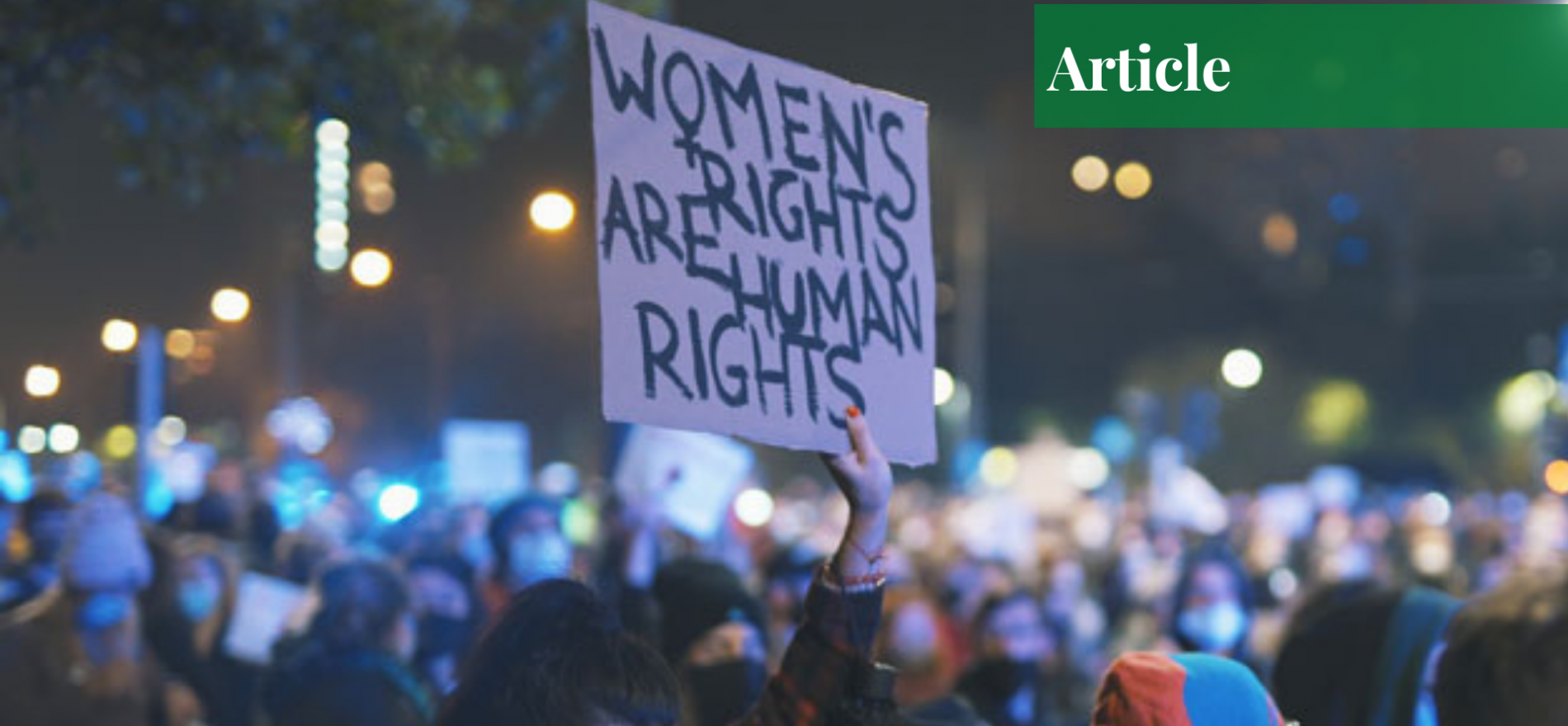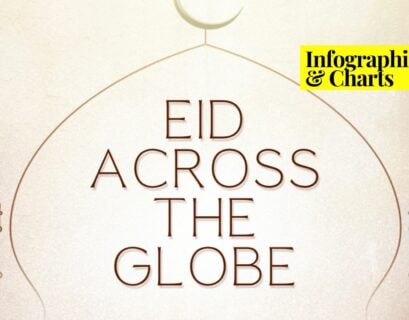Rimsha Zia has a degree in Civil Engineering from the University of Engineering and Technology, Lahore. She has a keen interest in social and political issues. She is an opinionated person and a strong advocate of women's empowerment and gender equality.
Women’s March
Every year on the 8th of March, women around the world take to the streets and march to advocate gender equality and women empowerment against patriarchy and misogyny. This year too, women from all over the globe gathered in solidarity with each other on a collective and inclusive platform from all strata—including minorities and marginalized groups. Pakistan is no more of an exception to this march for women’s rights; the women of the state are stepping forward against suppression, marginalization, oppression, and inequality and fighting for their rights.
Feminism, a movement that majorly emanated from the west, has now propagated all over the world. In the coeval era, women from every country and every nook of the world are coming forth to stand up for their rights and equal status in society.
Talking about the status of this year’s march—titled “Patriarchy ka pandemic” which translates to “The Patriarchy Pandemic”—myriad headlines, news, and social media marked the contemporary Aurat March (Women’s March) for women’s rights as the most troubled one in Pakistan.
The Underlying Concerns
Various concerns need to be discussed regarding the status and progression of the march in a country where patriarchy and extremism are engulfing the society to the core. Why was this year’s march, in particular, the most critical one in Pakistan? Is there a need for such a march to be staged in the country or not? If yes, then is it happening in the right way or not? Will the march succeed in Pakistan and how long will it take to get all the demanded women’s rights?
Movement by any group focused on a particular agenda can do wonders. It is evident from the past movements that it can bring change in conservative thoughts and challenge societal norms and eventually culminate in a revolution. Hopscotching through history, it would be crystal clear that the Aurat March in Pakistan is not something unusual, unnecessary, or recently shaped – rather such movements have been organized throughout history. Hence, the contemporary march – if done effectively – can prove to be an effective tool to help purge the society of rampant misogyny and patriarchy.
Historical Movements: A Glimpse
Feminism is a movement advocating for the equality of women’s social, economic, political, and legal rights to those of men. In 1837, Charles Fourier used ‘Feminisme’ to describe women’s liberation. The very first convention was the Seneca Falls Convention held in New York in 1848. Elizabeth Cady Stanton and Lucretia Mott congregated a few people in the state; though the movement encountered derisive remarks, it led to the foundation of the women’s rights movement.
In 1920, the 19th Amendment was ratified to the U.S constitution, declaring that the right of citizens of the United States to vote shall not be abridged by the United States or any state on account of sex. It was nicknamed the “Susan B. Anthony Amendment” in honor of her work on behalf of women’s suffrage. Although black women remained deprived of their voting rights until 1965, the struggle for equal status for women had been initialized with a promising future ahead.
Moreover, in 1873, New Zealand’s suffrage campaign was started. A 270-meter long suffrage petition named “Monster” was presented to New Zealand’s parliament. Resultantly, New Zealand became the first self-governing nation to allow women to vote and inspired suffragists across the globe.
One of the most paramount movements was the Mystique movement associated with the second wave of feminism in a sagacious way. In 1963, Betty Friedan’s The Feminine Mystique came out and sold over 3 million copies within 3 years. Friedman argued that the fault didn’t lie with women, but with a narrow-minded society that refused to let women tap into their creativity and intellect.
It was not revolutionary in its thinking, but it was revolutionary in its reach. 3 million readers now had the justification to be angry and were ready to rally for a unified goal—social equality. This rally produced various substantial changes in the form of the Civil Rights Act in the US, which abolished discrimination in employment based on race and sex.
Fast-forward to 2017, the #MeToo movement, re-introduced by actress Alyssa Milano, expanded widely against sexual harassment and abuse. Women from all social backgrounds, from leading actresses to the common women, came to the fore and unveiled their experiences, and raised their voices.
The above-mentioned prominent movements of the past validate the fact that such movements, if propagated prudently, can bring victorious results. It can be inferred that such movements have been happening since the days of yore with positive outcomes. Encapsulating our discussion to Pakistan, the question arises whether or not it will bring any tangible result in this society too?
The Obstacles in the Path of Pakistan’s Aurat March
First and foremost, there is a need to shed light on the adopted ways and mindset of the people in Pakistan’s society, which have the potential to act as a major gateway or obstacle in the way of the success of the movement. The following are the major detriments that demand clear-sighted policies and rational attitude in the propagation of Aurat March in Pakistan.
Slogan Illiteracy
In a country like Pakistan, where patriarchy and extremism are rampant, the mindset of the audience is everything. Chanting about the prevailing brutalities against the women in Pakistan and demanding women’s rights is only half the battle. Spreading facts around the bourgeoning incidents and the thought behind the varying slogans is the need of the hour.
The first tragic flaw in the ongoing march is the slogan illiteracy. Spectators and self-proclaimed gatekeepers of honor are conceiving a whole superficial meaning of the raised banners and slogans. If a sloganeer says, “Mera jism, meri marzi” (my body, my choice), then there is nothing sexual or sensual that is being demanded.
Rather, the slogan traces the horrific incidents of groping, forced marriages, and rapes in Pakistan and the world at large. It aims to highlight the gross facts presented by the United Nations International Children’s Emergency Fund (UNICEF). According to a UNICEF report, in Pakistan, 21% of girls are being married forcefully before age 18, and 3% are married before even age 15. Women from religious minorities remain particularly vulnerable to forced marriage.
The recent motorway gang rape incident is enough to corroborate this slogan. The banner provokes the society to lend an ear to the horrific statistics of the Human Rights Commission of Pakistan and the police, according to which 11 rape cases are registered every day in Pakistan and over 22,000 rape cases have been reported to the police in the last 6 years.
“Mera jism, meri marzi” encompasses the realms beyond peripheral and ostensible meanings and demands the non-objectification of women. It underscores the factor of consent while calling attention to the reality that women are not commodities but humans.
However, the problem lies in the background of the slogans. The line “my body, my choice” is widely used in the west for pro-abortion movements, for sexual freedom, and to legalize prostitution. The same line being used here poses a problem since most people associate the tagline with the demands it represents abroad. While the march itself is a powerful movement, West-inspired slogans do not translate well in Pakistani society.
Another controversial slogan is “Apna khana khud garam karo” (heat up your own food). Women in Pakistan are generally responsible for the house, and this slogan seemingly showcases their unwillingness to take care of the house, and the family’s dietary requirements. does not mean that women don’t want to work in the kitchen but traces back to a bulk of terrible incidents. One such incident included a man named Yar Muhamad Jataoi who axed his 50-year-old wife, Kori Jataoi, to death in the Sujawal district of Sindh for not preparing dinner on time.
The poster does not mean to label cooking as an inferior job. It is meant to help people recall horrific, related incidents – such as one in 2015 when a father killed his 12-year-old daughter (with the help of his son) by repeatedly beating her for not making the chapatti properly. The girl, Aniqa Khalid, was found dead outside Mayo Hospital where she was dumped by the duo.
The slogan does not aim to exchange or reverse any gender roles but it exposes the brutality of men who have been undeniably cruel to their wives. One such incident was that of a man in Badin, who axed his wife Keeso Kolhi (the mother of two minor girls) to death due to her delay in making a cup of tea. The slogan is a demand for men to behave justly and humanely.
Either more awareness needs to be spread around the background and the demands associated with the slogans, or the slogans should be tailored for the Pakistani society. The masses must focus on the pain behind the slogans rather than focusing on the perfunctory and surface meaning, which turns a sensible, focused, and goal-oriented movement into filth.
A Dreadful Infusion of Misogyny and Religious Extremism
Patriarchy and religious extremism are plaguing society in an unprecedented way. Imagine the magnitude of the disaster that could explode by the infusion of these termites. This is what happened in this year’s Aurat March. Digital media, which plays a substantial role in the acceleration of any movement, is being exploited by anti-Pakistan bodies for achieving nefarious goals and engendering misinformation.
In the recent march, photoshopped banners and videos by hitherto unknown groups had culminated in blasphemy allegations. This resulted in threats by the religious parties, against the march and its organizers. Deplorably, the social movement turned into a religious battle.
Before criticizing the women protesting, society needs to focus on the reasons which compelled them to take to the streets. In a country, if any group feels an urge to utilize its right to protest to get other basic human rights then, this undeniably presents an alarming situation that calls for attention towards an immediate change.
The foremost step by the society and the incumbent government should be retrospection. It is not a matter of demanding rights but of their implementation. Every human is born with these rights which have also been stamped by the constitution of the state. All fuss is about the non-implementation of these rights by the state-holders and guardians.
Division among Women
One of the exacerbating aspects is that women are themselves divided in their opinions. The women of tribal and rural areas, who are undoubtedly the major victims of the patriarchal culture, have no voice. They even have no access to the internet and social media; hence, they are unaware of any sort of march which is being staged for their rights as women. Moreover, the uneducated women of tribal and rural areas of Pakistan are often unaware of the existence of women’s rights.
According to the Global System for Mobile Communications Association’s (GSMA) 2019 “Mobile Gender Gap Report,” Pakistan has the widest mobile ownership gender gap; women are 37 percent less likely than men to own a mobile due to patriarchal attitudes and economic disparity. Hence, the leaders of the movement should make the disadvantaged groups in Pakistan aware of women’s rights and the movement by arranging various seminars and educational facilities.
Moreover, it is pertinent to note here that there exist some extremist, and some anti-state women within the movement. Some groups organized dances and performances in the march which was criticized even by their fellow women. Some self-proclaimed women leaders such as Marvi Sirmed make fun of religion and religious symbols, which rightfully infuriates most groups. The movement itself is becoming strife between westernism and conservatism – because of such parties with underlying agendas.
However, if we look into a holistic picture, the real purpose behind the movement is far from any kind of “–ism”, rather it entails the whole human concerns and legal demands. It is a call for humanity. Although, only a handful of women are striving with moderation under the ambit of demanding equal rights and abolishment of patriarchal culture.
Bleak Future Ahead
It is evident from the past movements that such marches can bring forth promising outcomes. Concerning the current march, there is a need to take into account the above-mentioned flaws and discrepancies to get successful outcomes. Yet, if the movement continues to be conducted in the same way as the recent one, unfortunately, a very bleak future lies ahead for it, with no favorable consequences.
The country, which is already enmeshed in extremist and suppressive sentiments, is being turned more conducive to abhorrence, owing to the consideration of superficial scenarios rather than contextual and factual meanings. It is time for the advocates and the spectators to reinvigorate the ways. The society of Pakistan needs to be more tolerant and far-sighted towards the Aurat March. The Aurat March needs to be wary of the society it is operating in, and tailor the slogans to get the masses on their side. If the problems are communicated correctly, the majority will sympathize and come together to make an actual difference in society. For instance, in the rape case of a 6-year-old girl, the whole country’s outrage was the reason for swift action. Similarly in the motorway rape case, the people came together to demand justice. With the current trend of the movement becoming a fight between groups over ideologies, the real problem of violence against women remains as is.
Moreover, women on their part need to be more unified, unequivocal, and moderate as one entity. Above all, the state of Pakistan and its incumbent government should adopt a more proactive role, punctuated by pro-women legislation, and ensure the inviolability of all the women’s rights already chartered in the constitution by practical implementation because in the end, “Human rights are women’s rights and women’s rights are human rights.”
If you want to submit your articles and/or research papers, please check the Submissions page.
The views and opinions expressed in this article/paper are the author’s own and do not necessarily reflect the editorial position of Paradigm Shift.


















